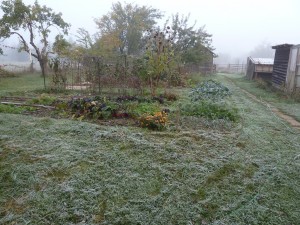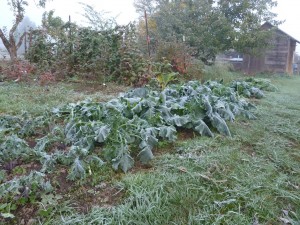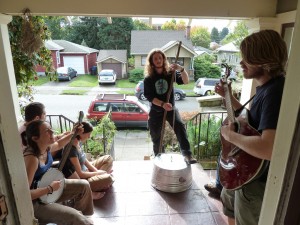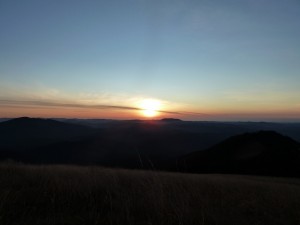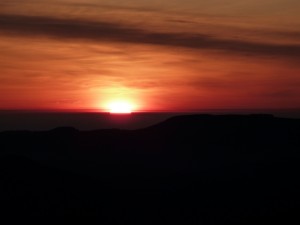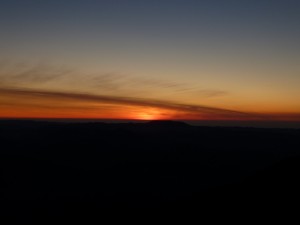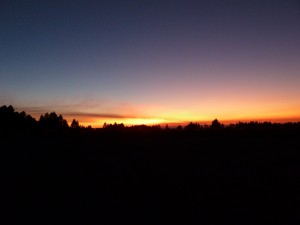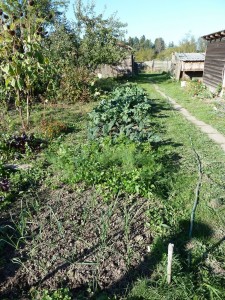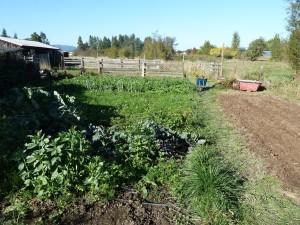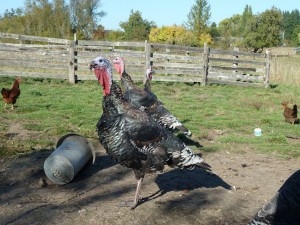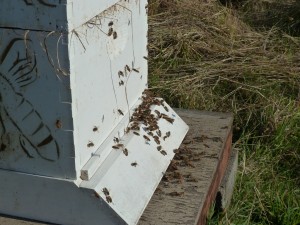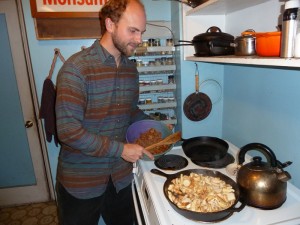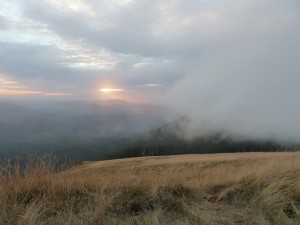 It seems folks have finally gotten fed up with Wall Street and corporate greed, as there are “Occupy” protests going on in all major cities including Eugene and Portland. “We are the 99%,” they say – though in reality they are probably more like 80% – the upper class in this country is pretty sizable.
It seems folks have finally gotten fed up with Wall Street and corporate greed, as there are “Occupy” protests going on in all major cities including Eugene and Portland. “We are the 99%,” they say – though in reality they are probably more like 80% – the upper class in this country is pretty sizable.
Now the conservatives have sparked a counter-protest, saying “we are the 53%,” referring to the 53% of Americans who earn enough to pay income tax. Hypocrisy about anti-tax conservatives being proud of paying taxes notwithstanding, I can sort of understand their argument. The American Dream, they say, is that anyone can succeed if they work hard enough, so it must be that the protesters simply haven’t done that. While it may be easier for the daughter of a banker to become a banker, the daughter of a California strawberry picker can also become a banker if she studies and works three jobs. There is still some truth to the ideal, as exemplified by entrepreneurs-turned-billionaires like Bill Gates and Steve Jobs. But I see a lot of fallacies in the American Dream, among them the following:
- While it is possible for anyone to succeed, it is not possible for everyone to succeed. It is the structure of the system that determines that, say, 40% of jobs have poor conditions and inadequate pay, and while it may be possible for any given person to succeed (i.e. land a better job) with enough determination and chutzpah, 40% of people will always have shitty jobs. Thus the system is intensely competitive, and the only way for our society as a whole to move up is to give the shitty jobs to people outside our society (i.e. immigrants). Of course this is both unsustainable and unfair, and once the immigrants move up in society it is time to find more immigrants. To me it is little more than an institutionalized version of servitude. I offer a potential solution to this in point #1 below.
- Inequality of the playing field increases with time. If everyone has $10,000 and the American Dream system is initialized, after 30 years some people will have $20,000 and others will have $5,000. But of course the children of the people with $20,000 will have more opportunities and on average earn more than the children of the people with $5,000. After 200 years of this system, we have a staggering million-fold variation in personal wealth, from 10s of thousands to 10s of billions. Far more wealthy people were born into money than acquired it through hard work. Thus the American Dream has largely degenerated into social class stratification.
- People can accumulate money without doing work that benefits society. The idea of the American Dream is that hard-working people and innovators will be rewarded because others are willing to pay for the fruits of their labors. Again we have the creators of Windows and the iPhone as golden examples, but we also have many thousands of investors (who may have initially made money through useful work) making billions of dollars trading stocks and commodities futures. These people are siphoning money off of society while providing no benefit in return, and it is against this that the Occupy Wall Street folks are protesting, not against the well-intentioned but highly flawed American Dream.
If I were in charge of designing an economic model that would function in our modern era of specialization, I would do the following:
- Allow everyone to specialize, and divide up unskilled/undesirable but necessary labor across all capable citizens. Thus rather than a doctor or a welder practicing five days a week, they would practice three days a week and spend the remaining two picking fruit, sweeping floors, butchering chickens, or working as cashiers in a huge rotation such that each job comes around only rarely, rather like jury duty but on a much larger scale. Everyone would be compensated equally for this work, or perhaps paid more for particularly unpleasant tasks such as hauling garbage or cleaning toilets.This would accomplish three things:
- No one would spend all of their time working a shitty job.
- Everyone would have more variety in their lives.
- Everyone would have a chance to develop a specialized skill.
If implemented, this scheme would introduce a much greater sense of equality and community, as I could easily find myself picking berries alongside my doctor and my car mechanic. Most unskilled tasks are tolerable or even enjoyable when performed in moderation. I will happily spend one day a year butchering chickens, but I can’t imagine doing it 40 hours a week all year. And so it is with working fast food, stocking shelves, working as a cashier, picking strawberries, keeping schools clean, and countless other essential tasks that require zero to minimal training.
With everyone spending 30-40% of their time doing unskilled labor, there would be a need for more welders, carpenters, pilots, doctors, teachers, etc. Thus people who are currently unemployed or working miserable jobs would have the opportunity to choose a specialty and receive the necessary training.
- Set maximum and minimum wages for specialized work. One of the main criticisms of communism is that enforced economic equality stymies innovation and encourages laziness. I believe that is true to a degree, and I see no reason why an airline pilot should not be paid more than a store manager. Pilot training entails more risk and responsibility and incurs more education debt. However, unequal compensation needs to be kept in check. I would propose setting a minimum wage sufficient to achieve a good quality of life (probably around $20/hr, or $42,000/yr) and a maximum wage of five times that (around $100/hr in today’s dollars, or $141,000/yr if they earn that much 3 days per week and $20/hr the other two for unskilled work). All specialized work is necessary to the functioning of society, so all should be compensated fairly. No work is truly worth more than $100 per hour, in my opinion. Yes, that does apply to CEOs and oil barons. Any corporate profits above maximum wage and investor returns would become public assets to be donated to a worthy cause.
- Restructure Wall Street completely. I would allow corporations to sell investments (shares), but require them to either pay dividends indefinitely or promise to buy back shares at a higher price in the future. If the company fails, the investor loses money. That much would be the same. My big change would be to ban trading and selling of shares among investors; shares could only be purchased from or sold back to the issuing company. Such a change would preserve the important function of Wall Street (providing needed cash to startup or expanding companies while allowing people to invest their money) while eliminating the institutionalized gambling known as investment trading which serves only to make the rich richer while destabilizing the system (think housing bubble) when the paper value of assets far exceeds their actual value.
- Eliminate interest. Inflation is a crazy and unnecessary game that forces people to try to earn more interest than they spend. As long as most people are in debt and paying interest, society will maintain a sense of scarcity as there is often simply not enough money in the system for everyone to successfully pay off their debts. In place of banks there would be credit unions, which would charge fees (e.g. 1% of total loan value) to cover their time and expenses but would not charge interest. I might limit personal debt to a maximum $20,000 vehicle loan and a maximum $200,000 mortgage, thus eliminating the debt spending and personal bankruptcy that is so common these days. Emergency expenses would be covered by universal insurance (see #5).
- Provide public universal insurance from an insurance fee. Everyone would pay the same amount, probably around $5,000 a year, into a publicly-administered, not-for-profit fund. This fund would provide universal health care as well as cover disaster recovery and emergency infrastructure repairs. There would be no wasteful suits and settlements to determine who owes damages, as all damages would be covered out of the fund. Lawyers would be employed only to prevent fraudulent claims. Monthly dues would be determined solely based on the balance of the fund; thus everyone would pay a little more after a hurricane. Other insurances (home, vehicle) would be publicly administered as well, but costs would vary based on the value of the insured home or vehicle.
- Combine workers’ comp, disability, and Social Security programs into one tax-funded emergency fund. Pay everyone equally (not based on past wages) and only pay those who are disabled or unable to work. Those wishing to retire while healthy would need to save money from their work by adopting a slightly more frugal lifestyle. Personally I am in favor of taking two months off every year rather than working for 50 years and then getting 10 years off (the ratio is the same), but this would be up to the individual.
The net effect of these changes should be a functioning high-tech economy with a greater sense of equality and community, few if any social class distinctions, and no existential fear about where the next paycheck will come from. I see plenty of social barriers to implementing it, and I’m not sure if it will ever happen, but if I ever find a country or community with an economy organized like this I can see myself moving there.

